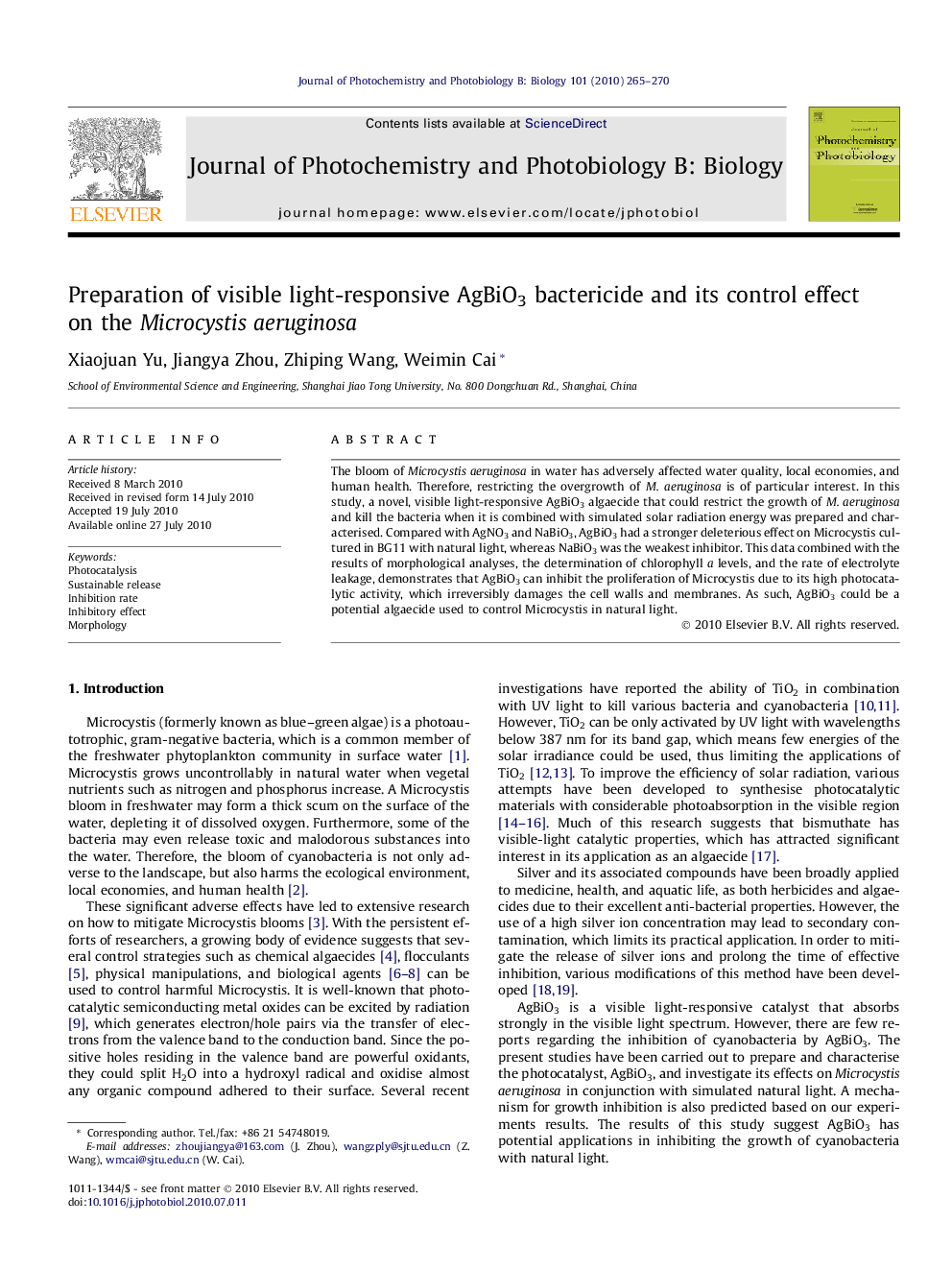| Article ID | Journal | Published Year | Pages | File Type |
|---|---|---|---|---|
| 29993 | Journal of Photochemistry and Photobiology B: Biology | 2010 | 6 Pages |
The bloom of Microcystis aeruginosa in water has adversely affected water quality, local economies, and human health. Therefore, restricting the overgrowth of M. aeruginosa is of particular interest. In this study, a novel, visible light-responsive AgBiO3 algaecide that could restrict the growth of M. aeruginosa and kill the bacteria when it is combined with simulated solar radiation energy was prepared and characterised. Compared with AgNO3 and NaBiO3, AgBiO3 had a stronger deleterious effect on Microcystis cultured in BG11 with natural light, whereas NaBiO3 was the weakest inhibitor. This data combined with the results of morphological analyses, the determination of chlorophyll a levels, and the rate of electrolyte leakage, demonstrates that AgBiO3 can inhibit the proliferation of Microcystis due to its high photocatalytic activity, which irreversibly damages the cell walls and membranes. As such, AgBiO3 could be a potential algaecide used to control Microcystis in natural light.
